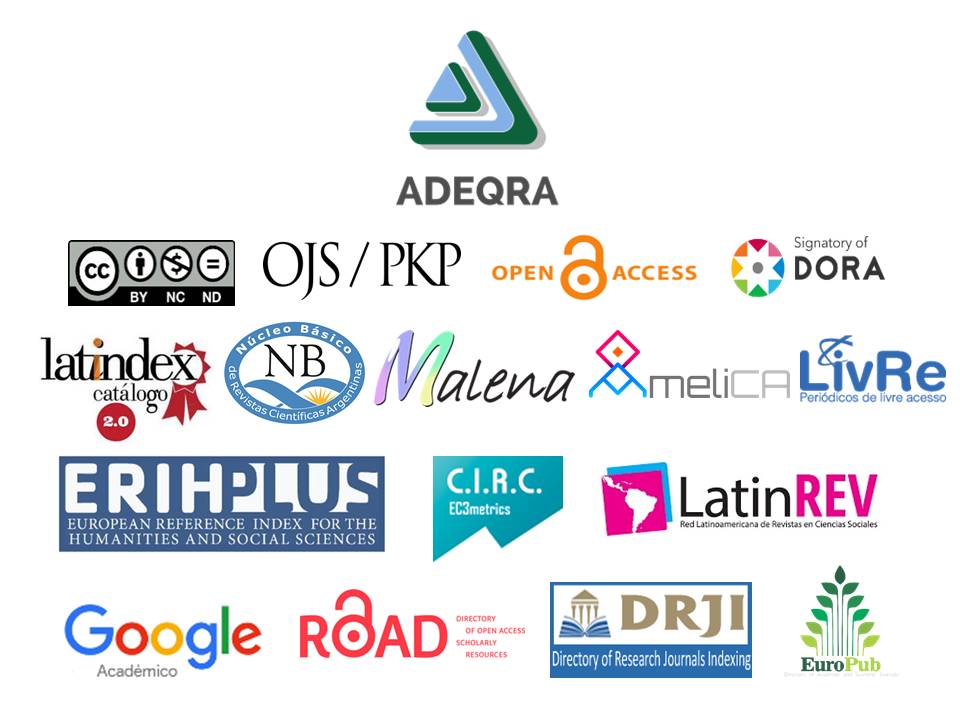Systematized bibliographic review: The language chemistry teaching publications in Argentina
Keywords:
definitions, educational problems, chemistry teachingAbstract
This article presents the results of a descriptive bibliographic review on the Chemical Language axis of the different editions of the journal Educación en la Química from 2001 to 2019, with the aim of bringing teachers closer together possible solutions to current educational problems, find research niches and encourage the task of writing and disseminating teaching research work. The review led to the identification of obstacles in the teaching-learning process focused on the specific communication of the chemistry area, concluding in the need for the dissemination of consensus that would allow the communication gap between teachers and students to be reduced.
References
Caamaño, A. (2014). La estructura conceptual de la química: realidad, conceptos y representaciones simbólicas. Alambique. Didáctica de las ciencias experimentales. 78, 7-20. https://www.researchgate.net/publication/280382987
Cabrera Castillo, H. G. (2017). Caracterización del lenguaje químico asociado a la combustión en profesores en formación inicial de ciencias naturales. Enseñanza de las ciencias. N. Extraordinario. 2473- 2478. https://www.raco.cat/index.php/Ensenanza/article/view/336872/427699
Ciriaco, A., Jones, N. y Pereyra, V. (2020). Revisión bibliográfica sistematizada: las publicaciones sobre la enseñanza de la química en Argentina. Educación en la química, 26(2), 139-152. http://educacionenquimica.com.ar/ojs/index.php/edenlaq/issue/view/64/1
Codina, L. (2020). Cómo hacer revisiones bibliográficas tradicionales o sistemáticas utilizando bases de datos académicas. Revista ORL 11(2), 139-153. https://doi.org/10.14201/orl.22977
Galagovsky, L., Bekerman, D., Di Giacomo, M .A., Alí, S. (2014). Algunas reflexiones sobre la distancia entre “hablar química” y “comprender química”. Ciencia e Educacao. Bauru, 20(4), 785-799. http://dx.doi.org/10.1590/1516-73132014000400002
Johnstone, A. H. (2000). Teaching of chemistry - Logical or psychological? Chemistry education: Research and practice in Europe, 1(1), 9-15. https://doi.org/10.1039/A9RP90001B
Liu, Y. y Taber, K. (2016). Analysing symbolic expressions in secondary school chemistry: Their functions and implications for pedagogy. Chemistry Education Research and Practice, 17, 439-451. https://doi.org/10.1039/c6rp00013d
Lorenzo, M. G. (2008). Destilación fraccionada de ideas condensadas. Una invitación al debate sobre la naturaleza de la química. Educación en la Química, 14(1), 17-24.
Lorenzo, M.G. (2018). Los contenidos de ciencias naturales en la enseñanza universitaria: especificidad, abstracción y orientación profesional. Aula Universitaria, 19. https://doi.org/10.14409/au.v0i19.6709
Markic, S. y Childs, P. (2016). Language and the teaching and learning of chemistry. Chemistry Education Research and practice, 17, 434-438. https://doi.org/10.1039/C6RP90006B
Márquez Bargalló, C. (2005). Aprender ciencias a través del lenguaje. Revista Educar, 33, 27-38.
Marzábal, A. (2014). La comprensibilidad del discurso químico de los textos escolares de ciencias. En C. Merino, M. Arellano y A. Adúriz Bravo, (Ed.), Avances en Didáctica de la Química: Modelos y lenguajes. (143-166). Valparaíso: Ediciones Universitarias.
Montagut Bosque, P. (2010). Los procesos de enseñanza y aprendizaje del lenguaje de la química en estudiantes universitarios. Educación química, 21(2), 126-138. https://doi.org/10.1016/S0187-893X(18)30162-9
Talanquer, V. (2010). Construyendo puentes conceptuales entre las varias escalas y dimensiones de los modelos químicos. Educación química, 5, 11-18. https://doi.org/10.2436/20.2003.02.35
Zabalza, M.A. (2005). Competencias docentes. Conferencia pronunciada en la Pontificia Universidad Javeriana de Cali, el 9 de febrero de 2005. https://universitologia.files.wordpress.com/2011/02/competencias-del-docente-miguel-angel-zabalza.pdf
Published
How to Cite
Issue
Section
License
Copyright (c) 2021 Andrea Silvana Ciriaco

This work is licensed under a Creative Commons Attribution-NonCommercial-NoDerivatives 4.0 International License.



